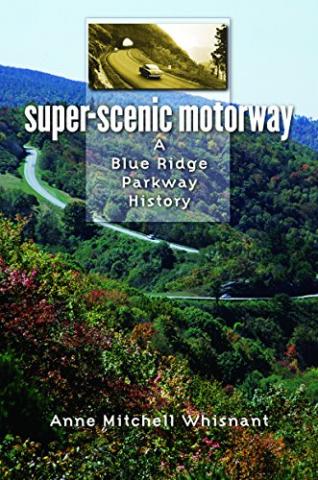The Blue Ridge Parkway wends its way over bucolic hill and dale, through Appalachian Mountain valleys and across heavily treed mountains flanks, crossing creeks, rivers, meadows and uplands for 469 miles from North Carolina to Virginia. Or vice versa, depending upon your perspective.
Though packaged as a New Deal godsend for hardscrabble North Carolinians and Virginians, the ribbon of highway actually took more than five decades to complete, having been started in 1935 but not being finished until 1987. It was an engineering masterpiece, an economic development project that not only tied together Shenandoah and Great Smoky Mountains national parks but which in so doing bolstered the national park movement in the East.
But the drive to build the Parkway also had an ugly underbelly, which Anne Mitchell Whisnant so painstakingly lays out as she chronicles the history of a road that rolls through not only the beauty of the Appalachians but the culture of a region in Super-Scenic Motorway, A Blue Ridge Parkway History.
Most of us, I think, envision the creation of national parks as a process intended to preserve spectacular beauty or a poignant moment in history for today and tomorrow. And while the Blue Ridge Parkway does indeed freeze a pastoral moment in Appalachian history, the impetus behind the highway was not so altruistic, as Ms. Whisnant's narrative points out.
Built beginning in 1935 through the cooperative efforts of North Carolina's and Virginia's state highway departments and federal agencies of President Franklin D. Roosevelt's New Deal and completed more than a half century later, in 1987, the Parkway has been as politically complicated and controversial as any other large public works development, she tells us right up front on page four of her introduction.
And then Ms. Whisnant deliciously delves into the back-room meetings that saw prominent North Carolinians and Tennesseans plotting strategies to see which of their states would get the Parkway as it was unraveled southward from Shenandoah. She all but brings us into smoke-filled rooms as the players schemed to make their cases to officials from the National Park Service, the Bureau of Public Roads, Interior Secretary Harold Ickes, and President Roosevelt himself.
Too, she takes us into the mountains as R. Getty Browning surveys the Parkway's route through North Carolina and as Stanley Abbott, an NPS landscape architect who was the Parkway's first employee, works to design and develop the entire route.
The author, who received her Ph.D. in history from the University of North Carolina, captures the desperation of Asheville, North Carolina, where officials worried that if the Parkway did not roll past their city it would mean economic ruin.
... Asheville's pleas for help in rescuing its tourist business became more and more desperate as city leaders began to fear that arguments based solely on God-given scenery might now win the day, she writes.
Too, she points out the hypocrisy that played out, for while North Carolina officials often pointed to the "needy" who would benefit from the Parkway, those populations in fact had neither much say in determining the course of the project nor much to gain from it.
Throughout the book's 330 pages Ms. Whisnant fashions a political drama of Americana and the parks movement, pairing the political theater with the mechanics of actually building the road, efforts to assuage locals who felt they were being robbed of their lands for a pittance in the name of economic salvation, and the birth of tourism -- with all its fits and starts -- along 469 miles of Blue Ridge majesty.
The text, given life through 15 years of research, thickens at times as Ms. Whisnant applies a historian's diligence to ensure that not one stone is unturned nor one stakeholder overlooked. In the end, though, the narrative is a compelling, and discerning, chapter in the history of the national park system.





Add comment